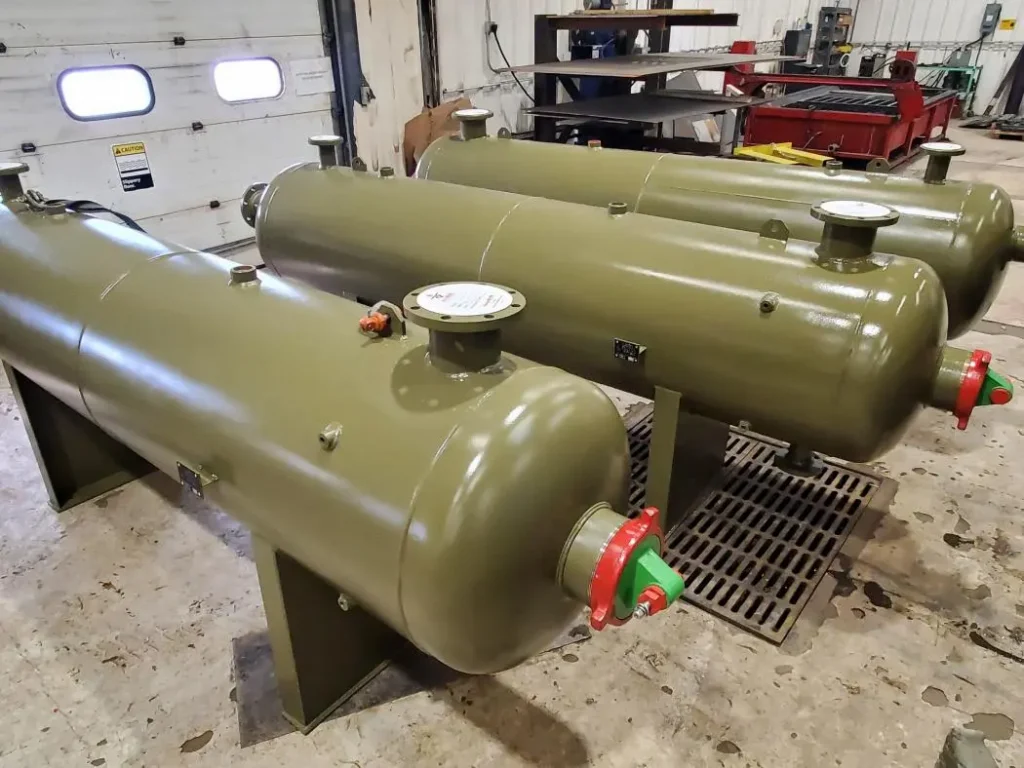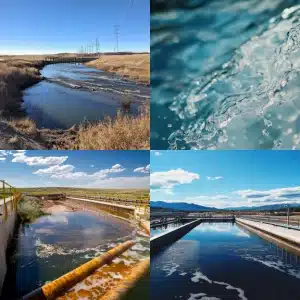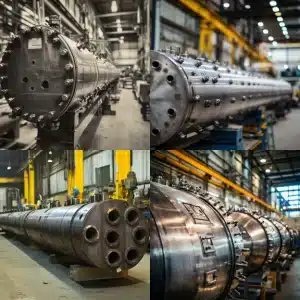
The Factor of Safety in Pressure Vessels defines how much stronger a vessel must be than the loads it will face to ensure safety. It ties directly into Pressure Vessel Safety Standards and Compliance and sets a buffer beyond normal operation. Knowing the correct Factor of Safety in Pressure Vessels helps ensure that inspection, maintenance, and design align with regulatory expectations. At RedRiver LLC we specialise in helping clients implement robust design, inspection and maintenance programmes for pressure vessels.
Factor of Safety in Pressure Vessels
Factor of Safety in Pressure Vessels plays a critical role in ensuring safe operation under pressure, thermal cycles and potential misuse. When assessing Pressure Vessel Safety Standards and Compliance, one of the first checks is what are the safety standards for pressure vessels, and this leads to questions such as what is ASME code for pressure vessel safety and how do pressure vessels comply with safety regulations.
When you design a pressure vessel you must consider the Factor of Safety in Pressure Vessels from the outset. That means you calculate the expected stresses (internal pressure, external loads, thermal stress, corrosion allowance) and then select a safety buffer so that if something goes wrong the vessel still remains within safe limits. The concept ties into Pressure Vessel Inspection and Maintenance because ongoing checks will confirm that the vessel continues to meet the original safety assumptions.
Why the Factor of Safety in Pressure Vessels matters
- It accounts for uncertainties in material properties, manufacturing defects, and unanticipated loads.
- It ensures alignment with safety standards such as the ASME Boiler and Pressure Vessel Code, which governs design, fabrication and inspection of pressure vessels.
- It underpins how to inspect a pressure vessel and what to include in a pressure vessel inspection checklist: the inspection must verify the original safety margin is still valid in light of actual service conditions.
How the Factor of Safety in Pressure Vessels is determined
When you ask what are the safety standards for pressure vessels, one answer is the design factor built into codes. For example, under ASME Code for pressure vessel safety (in Section VIII Division 1) the typical safety factor is about 3.5 on ultimate tensile strength. If a vessel is subject to cyclic loading, fatigue, extreme temperatures or corrosion, then the Factor of Safety in Pressure Vessels may need to be increased.
Material selection plays a huge role: if the vessel uses a material with a clear yield point you may use an FoS of about 3.5; if the yield point is not clearly defined you may need FoS of 4 or higher. Red River+1
Inspection techniques such as radiography, ultrasonic testing or visual inspection influence joint efficiency and result in adjusted allowable stresses. In effect those inspection regimes feed into how often do pressure vessels need to be inspected and what to include in a pressure vessel inspection checklist.
Integration with Pressure Vessel Inspection and Maintenance
Ensuring the Factor of Safety in Pressure Vessels remains effective is a key part of Pressure Vessel Inspection and Maintenance. Here’s how:
- How often do pressure vessels need to be inspected? Inspection intervals are determined by service conditions, vessel design, hazard classification and the results of previous inspections.
- How to inspect a pressure vessel? Visual, ultrasonic thickness testing, radiographic weld inspections, pressure tests and leak detection are standard.
- What to include in a pressure vessel inspection checklist? The checklist should include wall‑thickness measurement, corrosion/erosion signs, weld integrity, support conditions, relief device operation, thermal damage, and review of design assumptions including the original Factor of Safety in Pressure Vessels.
- How do pressure vessels comply with safety regulations? By demonstrating that they were designed and fabricated to the right standards (such as ASME) and by maintaining documentation and test records that show the design margin remains intact.
Additional design considerations affecting the Factor of Safety in Pressure Vessels
- Joint efficiency: Welded joints may reduce strength compared to base material. Designers may assume lower joint efficiency (for example 0.85) and thus increase thickness or FoS accordingly.
- Material behaviour under temperature changes: Different materials expand, contract, creep or fatigue under temperature swing. The Factor of Safety in Pressure Vessels must account for this.
- Corrosion and wall thickness allowances: A corrosion allowance adds extra thickness to maintain the original design stress levels over time. Without that, the effective safety margin erodes.
- Handling external forces: Vessels subjected to vibration, seismic loads or cyclic loads may require higher safety margins or more frequent inspection to keep the Factor of Safety in Pressure Vessels valid.
Why choose RedRiver LLC for your pressure vessel needs
At RedRiver LLC we specialise in the design, manufacturing, inspection and maintenance of pressure vessels. We ensure your vessel is built in alignment with contemporary Pressure Vessel Safety Standards and Compliance. We help you understand what is ASME code for pressure vessel safety, set the right Factor of Safety in Pressure Vessels, create rigorous maintenance programmes and supply inspection checklists. You get peace‑of‑mind knowing your pressure vessel aligns with both design and operational safety requirements. Visit us at to explore how we can assist.
Conclusion: Factor of Safety in Pressure Vessels
Understanding the Factor of Safety in Pressure Vessels is central to safe, reliable vessel operation. It drives design decisions, inspection regimes and maintenance strategies. By applying this concept alongside Pressure Vessel Inspection and Maintenance and staying aligned with codes like the ASME Code for pressure vessel safety, companies ensure their vessels comply with safety regulations and maintain long reliable service. Partner with RedRiver LLC for expert support across design, manufacture and maintenance phases.
Get Started With Us
At RedRiver LLC we stand ready to support your next pressure vessel project—from initial design through manufacturing, inspection and maintenance. Reach out and let us help you set a robust Factor of Safety in Pressure Vessels that meets your safety and operational goals.
FAQs
What is the ‘Factor of Safety’ in pressure vessel manufacturing?
The Factor of Safety in pressure vessel manufacturing is the ratio between the strength of the material or design limit and the maximum expected load or stress. It provides a margin of safety by accounting for uncertainties in material properties, fabrication, service conditions and unforeseen events.
How is the Factor of Safety determined for a specific pressure vessel?
Determining the Factor of Safety for a pressure vessel involves understanding the operating pressure and temperature, material properties, design code requirements (for example what is ASME code for pressure vessel safety), nature of loading (steady, cyclic, thermal), vessel contents, corrosion allowance and inspection/maintenance regime. All of these feed into what safety margin is required.
Does the Factor of Safety vary between industry applications?
Yes. The Factor of Safety in Pressure Vessels may vary based on the hazard classification, the risk of contents, cyclic or transient loads, extreme temperatures, corrosion potential and regulatory environment. Vessels in more severe service typically require higher safety margins.
What are the safety standards for pressure vessels regarding Factor of Safety?
Many design codes such as the ASME Boiler and Pressure Vessel Code specify allowable stress values which imply a safety margin. Under Division 1 of Section VIII the safety factor is typically around 3.5 on tensile strength. For other divisions or higher‑risk designs it may be lower or higher depending on detailed analysis.
How does proper inspection support maintaining the Factor of Safety in Pressure Vessels?
Inspection and maintenance help ensure that the original design assumptions (material properties, wall thickness, weld integrity, corrosion allowance) remain valid. When you include in your pressure vessel inspection checklist items like wall thinning, joint degradation, fatigue cracks or corrosion, you validate that the margin remains intact. If defects are found, corrective action helps restore that margin.
Key Takeaways
- The Factor of Safety in Pressure Vessels is a foundational buffer between design assumptions and real‑world stresses.
- Good design incorporates joint efficiency, material behaviour, corrosion allowance, inspection regimes and code compliance (such as ASME).
- Effective Pressure Vessel Inspection and Maintenance, including a solid pressure vessel inspection checklist, ensures the safety margin remains valid over time.
- Compliance with safety regulations and design codes isn’t enough—ongoing monitoring and maintenance preserve the Factor of Safety in Pressure Vessels.
- Partnering with a specialist like RedRiver LLC helps ensure your vessels are designed, inspected and maintained to support safe, reliable operation.
Related Blog Post
No subpillar set for this blog post.




